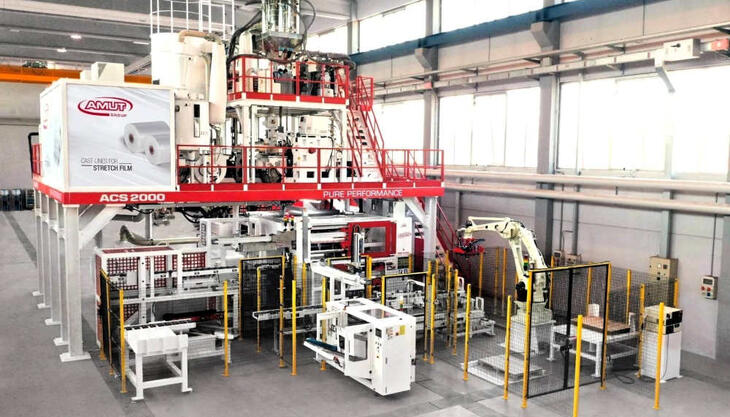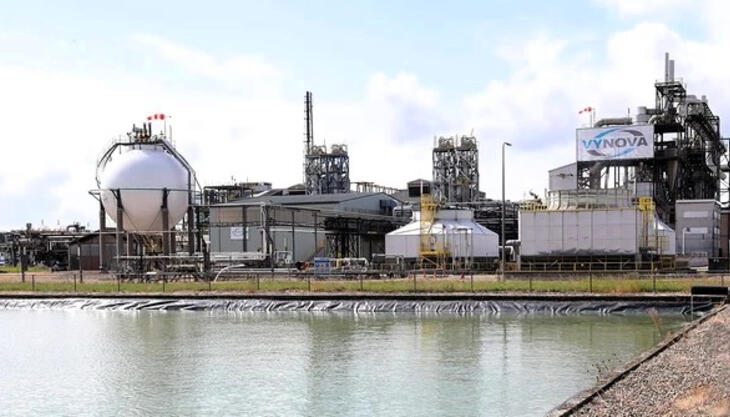Italian manufacturers: encouraging preliminary results, despite a few shadows

According to estimates by the Amaplast-Mecs Statistical Study Center, in 2023 the Italian plastics and rubber machinery production could set a new all-time record for the sector of over 4.8 billion euros, racking up a gain of at least three points over 2022.
This is mainly due to a positive trend in exports - which improved progressively over the nine months assessed by the Italian Institute of Statistics (Istat) - that have increased by 13% compared to January-September 2022. In the same period, imports have increased by 6% while the active trade balance has increased by sixteen points.
Exports - accounting for more than 70% of national production for the sector - show robust growth with a positive trend in all main machinery types for primary processing and those boasting the highest share of the total: moulds (24% share and +14% with respect to January-September 2022); extruders (12% and +22%), injection moulding machines (5% and +2%), blow moulding machines (4% and +17%), but also figuring prominently are machines for moulding and forming (4% and +22%), flexographic printers (4% and +18%), and machines for foamed products (4% and +40%).

In geographical terms, Europe confirms its status as primary destination of products made in Italy for the sector, with an overall share of 56%. EU countries account for 45% and sales within this market show the most positive results: Germany (+7%), France (+23%), and Spain (+19%). Two EU countries have made it into the top ten commercial outlets after a significant increase in exports: Romania (+71%) and the Czech Republic (+38%). We have also seen a robust increase in deliveries to Russia, in spite of all the well-known issues associated with this country: +61%.
The export trend to the America is more than satisfying (+24%), thanks to a new surge in USMCA markets - Mexico in particular - and to the continuing ebullience of a number of South American markets, with Brazil, Argentina, and Peru leading the pack. The Middle East has also shown a rather positive trend on average, driven principally by two markets: Saudi Arabia (+107%) and Israel (+47%).
Exports to the Far East, on the other hand, have witnessed a sudden deceleration (-12%), due essentially to the contraction of two principal markets - China (-15%) and India (-6%) - but also to a loss of momentum in other prominent destinations: South Korea (-61%), Japan (-47%), and Taiwan (-68%). The contemporaneous surge in sales to Thailand (+140%) and Indonesia (+81%) was not sufficient to counterbalance this slump since these two destinations have limited relative weight in the overall equation.

In light of its excellent performance in January-September 2023, Africa as a whole now boasts nearly a 6% share of the total. Sales to all countries bordering on the Mediterranean have increased greatly, while worth mentioning are South Africa and Nigeria in Sub-Saharan Africa, the largest markets in that region with values that have more than doubled since last year.
Beyond the import-export statistics, the concerns of Italian firms in the sector are focused on the progressive downturn in orders in recent months. However, at year’s end 2022, no one would have wagered on the positive results we are seeing for 2023: there were fears of a crisis of demand already in the first few months of the new year although it did not actually materialize until the second half of the year.
There are a number of economic and geopolitical criticalities characterizing the international context. The post-pandemic rebound – which reaffirmed the capacity of the industry, which suffered less than its counterparts, to response positively to adversity – was followed by other negative impacts: from wars to shortages in electronic (and other) components and the volatility of raw material and energy prices, from slowdowns in some global economies (such as Germany, closely linked to Italy) to increasing inflation and cost of money. While some commodity prices have returned to relatively acceptable levels, there remains an underlying uncertainty that hampers investment planning by firms, which is falling back this year and expected to come to a standstill in 2024.

The Confindustria Statistical Unit sees Italian GDP growing by a mere 0.7% in 2023 (thanks mainly to gains in the first half of the year that then began to erode in the second), and 2024 could be even worse at +0.5%.
The responses of Amaplast member companies to economic surveys covering the first three quarters of this year corroborate this climate of uncertainty, evidencing that revenues from domestic sales have contracted from one quarter to the next and at an increasing rate with each passing month. While revenues from sales abroad have grown, this trend showed signs of slowing down in the third quarter.
The domestic market has also not been kind to these Italian manufacturers as regards orders, which remained significantly below 2022 levels in the first three quarters of this year. Again, while the same indicator is positive when considering foreign customers, the trend is progressively weakening.

In effect, the slowdown in domestic demand may be considered cyclical to some extent, especially after the peak recorded in 2021, boosted by investment incentives.
“Precisely to address the challenges of the markets,” underscored Massimo Margaglione (picture on the right), Amaplast President, “it is increasingly important for companies to implement digital development plans, applying the models that will govern the future of the entire industrial machinery sector and revolutionize company organization, products, and services.” He added that “Digitalization is now coupled with servitization, which not only favours and optimizes industrial relations - that is, the relations between technology suppliers, machinery manufacturers, and end users - but offers benefits in terms of sustainability.” Margaglione concluded by noting that “another new and rapidly evolving reality, one which companies are having some difficulties in embracing, precisely due to the ceaseless introduction of updates, is generative artificial intelligence, which offers application potentials that have yet to be fully grasped.”



















